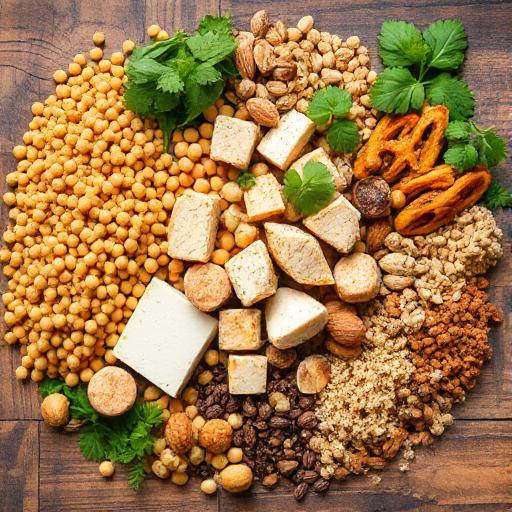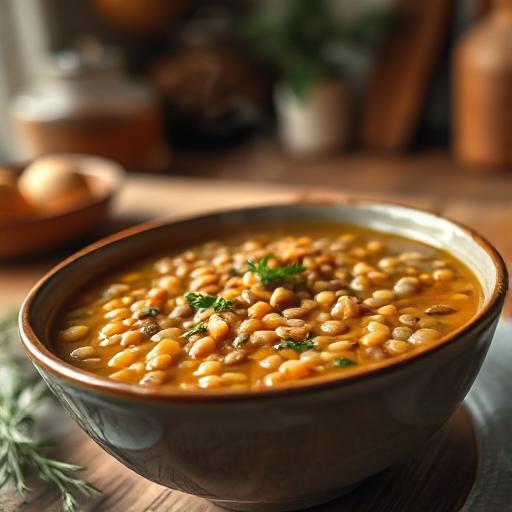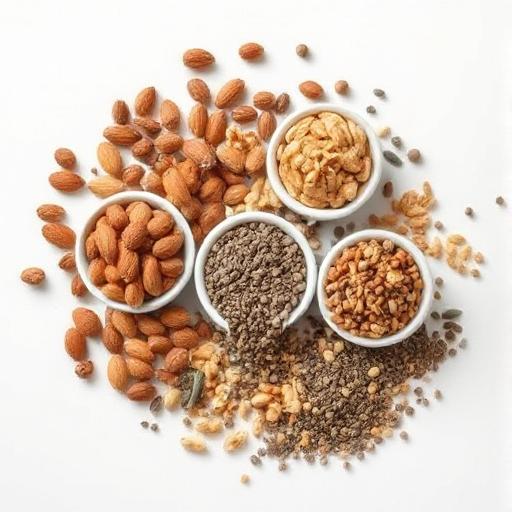
Introduction
The world is waking up to the power of plants. Health awareness is rising. Environmental concerns are growing. And right at the intersection is the booming interest in plant-based eating. Whether you’re a long-time vegan, a curious newcomer, or simply trying to shake up your protein game, understanding where to get your nutrients from plants is no longer optional—it’s essential.
This guide isn’t just a list of foods. It’s your gateway to mastering plant-based proteins. We’ll bust myths, unpack the science, and explore how you can turn ordinary meals into protein-rich powerhouses. It’s time to rethink what protein means—and why it doesn’t have to come from animals.

What Is Protein, Really?
Let’s start with the basics. Protein is made up of amino acids—the tiny molecules that do big work in your body. Think tissue repair, hormone production, enzyme function, and immune defense. Of the 20 amino acids, 9 are “essential,” meaning your body can’t make them and must get them from food.
For years, the spotlight’s been on meat, dairy, and eggs as the go-to sources. Why? Because they contain all 9 essential amino acids—aka “complete proteins.” But here’s the twist: plenty of plant foods do too, like quinoa, soy, and buckwheat. And even those that don’t? No problem. By eating a variety of plant-based foods throughout the day, your body gets everything it needs. The old myth of having to “combine” foods in a single meal is just that—a myth.

Top Vegan Protein Sources: A Comprehensive List
1. Legumes: Nutrient-Dense and Always Reliable
Legumes are the unsung heroes of vegan protein—cheap, versatile, and packed with fiber.
- Lentils – With about 18g of protein per cooked cup, lentils are quick to prepare and slide easily into soups, salads, curries, and more.
- Chickpeas – Approximately 15g of protein per cooked cup. Hummus, falafel, roasted snacks—chickpeas can do it all.
- Black, Kidney & Pinto Beans – Around 15g per cup, and perfect for everything from burritos to burgers.
2. Soy: The Complete Protein Powerhouse
Soy is one of the few plant-based sources that check off all the essential amino acids.
- Tofu – Around 8–10g per 100g. Absorbs flavor like a sponge. Grill it, scramble it, fry it, bake it.
- Tempeh – Fermented, nutty, and loaded with about 19g per 100g. Easier to digest than tofu, and even denser in nutrients.
- Edamame – About 11g per ½ cup. Snack-worthy and stir-fry ready.

3. Grains: Don’t Just Think Carbs
Some grains bring surprising protein perks.
- Quinoa – A “complete” protein with around 8g per cup. Great in salads or as a side.
- Oats – About 6g per ½ cup dry. Breakfast MVP.
- Brown Rice – Not as protein-rich, but still contributes about 5g per cooked cup.
4. Nuts & Seeds: Small in Size, Big in Impact
These are protein-dense and also deliver healthy fats, fiber, and minerals.
- Almonds – 6g per ounce. Easy snack, great in smoothies or granola.
- Peanuts – 7g per ounce. Technically legumes, but taste like nuts.
- Chia Seeds – About 4g per 2 tbsp, plus omega-3s and fiber.
- Hemp Seeds – 10g per 3 tbsp. Complete protein, easy to sprinkle on anything.
- Pumpkin Seeds – 8g per ounce. Great for snacking or tossing into salads.
5. Seitan: The Meat-Like Marvel
Made from wheat gluten, seitan delivers a whopping 25g of protein per 100g. Grill it, stir-fry it, sauté it—it mimics meat incredibly well. Just steer clear if you’re gluten-sensitive.
6. Nutritional Yeast: Cheesy, Nutty, and Packed with Protein
With 8g per 2 tablespoons, this golden flake is more than just flavor. It’s often fortified with B12 and adds a savory, cheesy kick to popcorn, pasta, and sauces.
7. Vegetables: Don’t Count Them Out
They may not rival beans or tofu in protein density, but veggies still add up.
- Broccoli – 4g per cup.
- Spinach – 5g per cooked cup.
- Potatoes – About 4g per medium spud.
Smart Strategies to Maximize Vegan Protein
Use Powders (if needed) – Pea, rice, and hemp protein powders can bridge the gap for athletes or busy folks.
Mix it Up – Don’t rely on just one source. Variety ensures you hit all amino acid targets.
Protein in Every Meal – Think tofu at lunch, beans at dinner, nuts for snacks.
Be Mindful – Feeling sluggish or hungry too soon after meals? You might need more protein.
.

Myth-Busting: Clearing the Air About Vegan Protein
- “Vegans don’t get enough protein.”
Wrong. With a balanced diet, protein deficiency is rare. Plants are more powerful than people think. - “Plant proteins are incomplete.”
Outdated. Many plants are complete. For others, variety across meals solves the puzzle. - “You must combine proteins in every meal.”
Nope. Your body isn’t keeping a meal-by-meal scorecard. It builds from what you eat over time.
Why Plant Protein Wins for the Planet and Your Body
- Lower Environmental Impact – Plant-based proteins use less water, produce fewer emissions, and avoid deforestation linked to livestock farming.
- Better Health Outcomes – Diets rich in plant foods are linked to lower risks of heart disease, diabetes, and certain cancers. Plus, plants come with fiber, antioxidants, and phytochemicals—things meat can’t offer.
Conclusion: The Power Is on Your Plate
Ditch the outdated protein myths and embrace the bounty of plant-based powerhouses. From lentils and tofu to seeds, grains, and even veggies—protein is everywhere, once you know where to look. The key? Be intentional. Eat variety. Stay curious. And enjoy the vibrant, flavorful journey to better health and a lighter footprint.
Plants aren’t just fuel. They’re your future. Ready to thrive? Let’s eat.
References
[1] National Institutes of Health. (n.d.). Protein. Retrieved from https://www.ncbi.nlm.nih.gov/books/NBK560688/ [2] The Vegan Society. (n.d.). Protein. Retrieved from https://www.vegansociety.com/go-vegan/how-go-vegan/protein [3] Harvard T.H. Chan School of Public Health. (n.d.). Legumes. Retrieved from https://www.hsph.harvard.edu/nutritionsource/legumes/ [4] USDA FoodData Central. (n.d.). Lentils, raw. Retrieved from https://fdc.nal.usda.gov/fdc-app.html#/food-details/172421/nutrients [5] USDA FoodData Central. (n.d.). Chickpeas (garbanzo beans), raw. Retrieved from https://fdc.nal.usda.gov/fdc-app.html#/food-details/172418/nutrients [6] USDA FoodData Central. (n.d.). Beans, black, raw. Retrieved from https://fdc.nal.usda.gov/fdc-app.html#/food-details/172419/nutrients [7] USDA FoodData Central. (n.d.). Tofu, firm, prepared with calcium sulfate. Retrieved from https://fdc.nal.usda.gov/fdc-app.html#/food-details/172430/nutrients [8] USDA FoodData Central. (n.d.). Tempeh. Retrieved from https://fdc.nal.usda.gov/fdc-app.html#/food-details/172429/nutrients [9] USDA FoodData Central. (n.d.). Edamame, frozen, prepared. Retrieved from https://fdc.nal.usda.gov/fdc-app.html#/food-details/172420/nutrients [10] USDA FoodData Central. (n.d.). Quinoa, cooked. Retrieved from https://fdc.nal.usda.gov/fdc-app.html#/food-details/172427/nutrients [11] USDA FoodData Central. (n.d.). Oats, rolled, dry. Retrieved from https://fdc.nal.usda.gov/fdc-app.html#/food-details/172425/nutrients [12] USDA FoodData Central. (n.d.). Rice, brown, long-grain, cooked. Retrieved from https://fdc.nal.usda.gov/fdc-app.html#/food-details/172428/nutrients [13] USDA FoodData Central. (n.d.). Almonds. Retrieved from https://fdc.nal.usda.gov/fdc-app.html#/food-details/170567/nutrients [14] USDA FoodData Central. (n.d.). Peanuts, raw. Retrieved from https://fdc.nal.usda.gov/fdc-app.html#/food-details/172426/nutrients [15] USDA FoodData Central. (n.d.). Seeds, chia seeds, dried. Retrieved from https://fdc.nal.usda.gov/fdc-app.html#/food-details/170554/nutrients [16] USDA FoodData Central. (n.d.). Seeds, hemp seed, hulled. Retrieved from https://fdc.nal.usda.gov/fdc-app.html#/food-details/170553/nutrients [17] USDA FoodData Central. (n.d.). Seeds, pumpkin and squash seed kernels, dried. Retrieved from https://fdc.nal.usda.gov/fdc-app.html#/food-details/170555/nutrients [18] USDA FoodData Central. (n.d.). Seitan. Retrieved from https://fdc.nal.usda.gov/fdc-app.html#/food-details/172424/nutrients [19] USDA FoodData Central. (n.d.). Nutritional yeast. Retrieved from https://fdc.nal.usda.gov/fdc-app.html#/food-details/172423/nutrients [20] USDA FoodData Central. (n.d.). Broccoli, raw. Retrieved from https://fdc.nal.usda.gov/fdc-app.html#/food-details/170379/nutrients [21] USDA FoodData Central. (n.d.). Spinach, raw. Retrieved from https://fdc.nal.usda.gov/fdc-app.html#/food-details/170417/nutrients [22] USDA FoodData Central. (n.d.). Potatoes, raw, skin and flesh. Retrieved from https://fdc.nal.usda.gov/fdc-app.html#/food-details/170393/nutrients [23] Position of the American Dietetic Association: Vegetarian Diets. (2009). Journal of the American Dietetic Association, 109(7), 1266-1282. https://jandonline.org/article/S0002-8223(09)00271-8/fulltext [24] Poore, J., & Nemecek, T. (2018). Reducing food’s environmental impacts through producers and consumers. Science, 360(6392), 987-992. https://science.sciencemag.org/content/360/6392/987